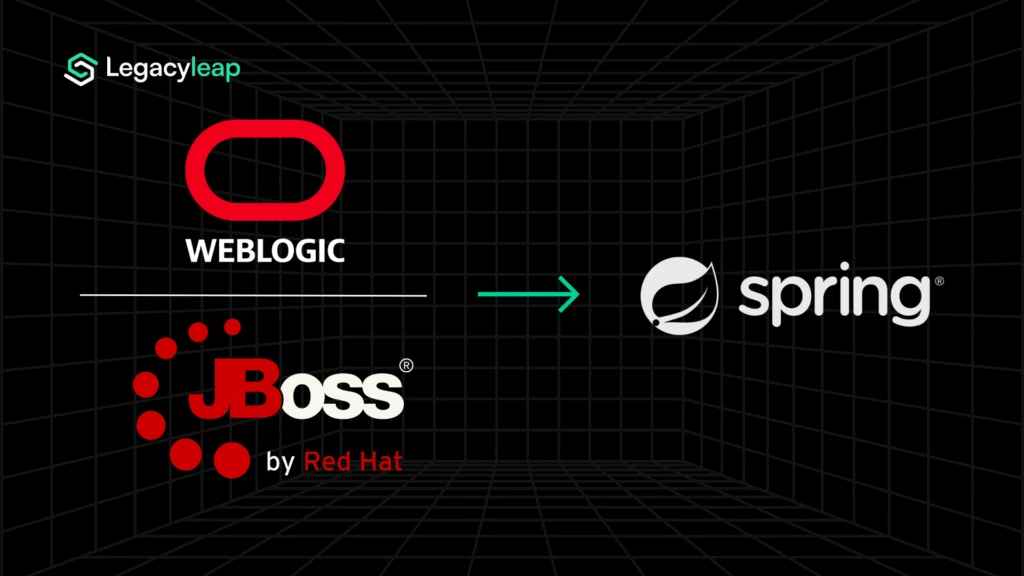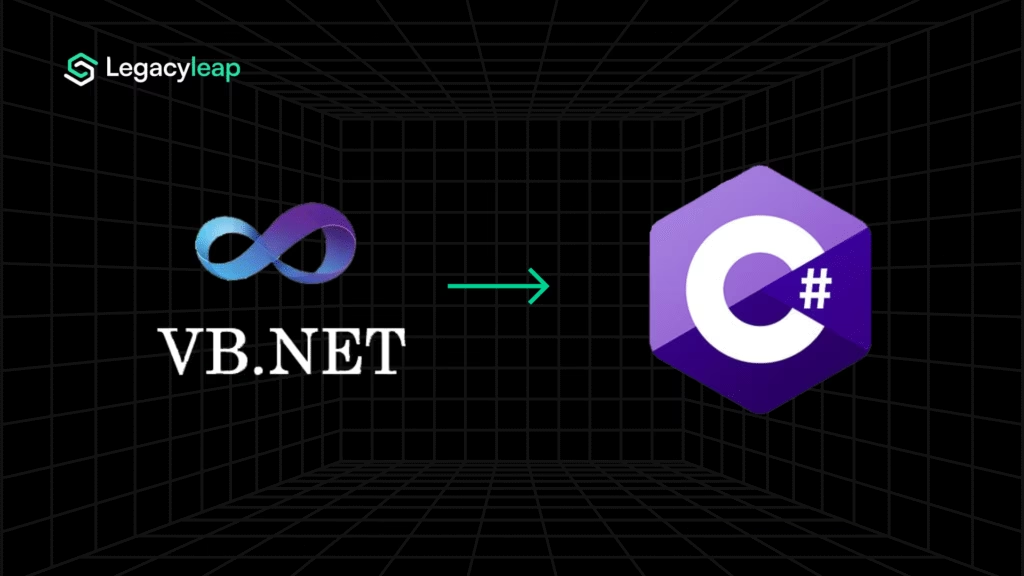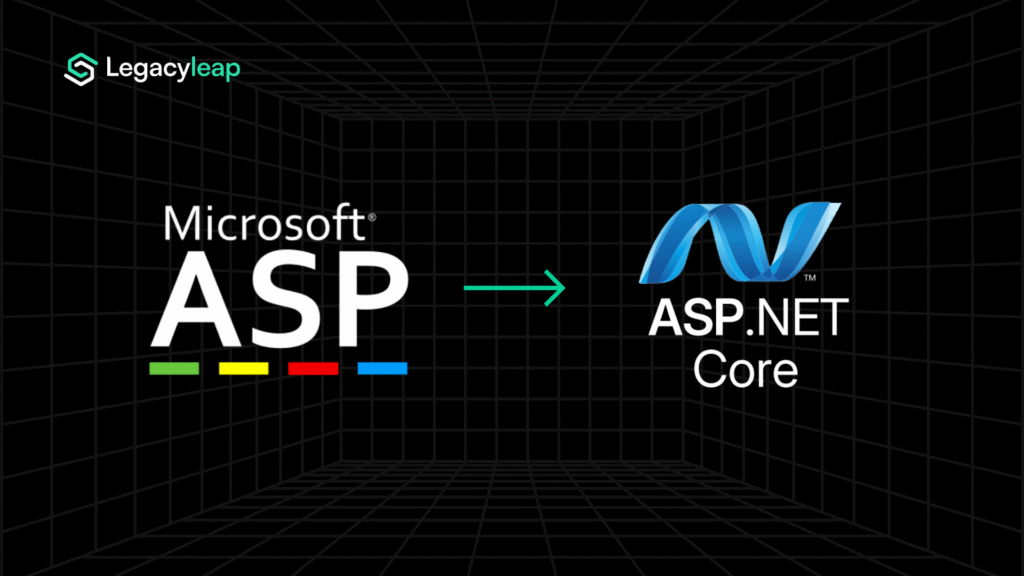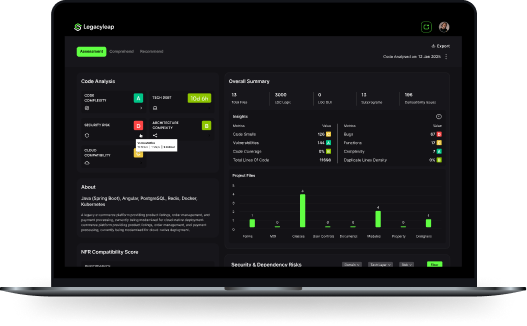Introduction: Why Enterprises Must Move Beyond JAX-WS
For years, JAX-WS has powered enterprise integrations through SOAP-based web services. It offered stability when interoperability was the goal. But in today’s API-first world, that stability has turned into rigidity.
SOAP services are heavy, XML-bound, and difficult to scale. Their verbose payloads add latency, WSDL contracts restrict agility, and deployment across containerized or cloud-native environments is rarely straightforward. Worse, as REST-based architectures have become the industry standard, the developer ecosystem for SOAP continues to shrink.
For enterprises still running large JAX-WS estates, the challenge isn’t awareness—it’s execution. Migrating to REST requires precise schema transformation, endpoint mapping, and security re-architecture without breaking existing integrations.
That’s where Legacyleap’s Gen AI modernization framework delivers predictability. Automating WSDL analysis, dependency tracing, and parity validation allows organizations to modernize JAX-WS services into RESTful APIs safely, incrementally, and with full functional assurance.
What REST APIs Bring to the Table
Moving from SOAP to REST is a shift toward agility, scalability, and long-term maintainability. REST APIs reduce friction across the entire application ecosystem, enabling faster development, cleaner integration, and better alignment with cloud-native infrastructure.
| Capability | JAX-WS (SOAP) | REST APIs (Modern) | Enterprise Impact |
| Protocol | SOAP over XML | HTTP over JSON | Simplified payloads, faster communication |
| Performance | Heavy, stateful, high latency | Lightweight, stateless, faster responses | Lower infrastructure cost and improved scalability |
| Contract Model | Rigid WSDL/XSD definitions | OpenAPI (Swagger) specifications | Easier versioning, faster partner onboarding |
| Cloud Readiness | Poor fit for containers | API-first and container-native | Seamless CI/CD and microservices deployment |
| Ecosystem | Declining tool and developer support | Mature, vibrant REST ecosystem | Long-term viability and reduced vendor risk |
| Security | WS-Security, SOAP headers | OAuth2, JWT, API gateway policies | Streamlined governance and modern compliance |
For CIOs and CTOs, the transition from SOAP to REST means eliminating integration drag. REST unlocks faster delivery cycles, simpler maintenance, and a foundation ready for event-driven, microservices-based architectures.
Key Challenges and Proven Strategies for JAX-WS to REST Migration
Migrating from JAX-WS to REST is a fundamental redesign of how enterprise systems expose, consume, and evolve services. Most SOAP-based applications have years of tightly coupled contracts, XML schemas, and client integrations that make modernization complex.
Here are the most common enterprise-level challenges:
- Contract re-mapping: SOAP’s rigid WSDL/XSD structures must be reinterpreted into REST endpoints using OpenAPI or Swagger. Each operation becomes an HTTP resource, and input/output types need to be normalized without breaking schema integrity.
- Data transformation: XML payloads used by SOAP are verbose and hierarchical. Migrating to JSON involves re-modeling data structures, managing type casting, and ensuring precision in serialization logic, especially where business-critical XML attributes control workflows.
- Service orchestration: SOAP’s built-in capabilities (headers, fault contracts, WS-Security) don’t have one-to-one equivalents in REST. These must be redesigned using lightweight REST conventions or offloaded to API gateways for standardized handling.
- Client dependencies: Legacy applications and external partners often depend on SOAP clients. Removing them prematurely can break integrations, making phased cutovers or dual-protocol deployments essential.
- Testing and validation gaps: Many SOAP systems lack sufficient test coverage or even baseline behavioral documentation. Without parity testing, REST services risk logic drift and unexpected regressions during migration.
Proven migration strategies include:
- Parallel service deployment: Run REST APIs alongside legacy SOAP services until all consumers are validated and transitioned.
- API gateway mediation: Use gateways to translate SOAP requests to REST responses, easing the shift for dependent systems.
- Incremental modernization: Adopt the Strangler Fig pattern – migrating services module by module, starting with low-risk or high-impact components.
These patterns reduce disruption, but without automation, migrations remain slow and error-prone. That’s where Gen AI–driven comprehension and transformation fundamentally change the process.
How Gen AI Accelerates and De-Risks SOAP-to-REST Migration
Manual JAX-WS modernization is notoriously complex. Teams spend months reverse-engineering WSDLs, re-creating service contracts, and validating every endpoint by hand. Gen AI introduces precision and scale by automating the most time-consuming and error-prone steps.
Here’s how modernization evolves under Gen AI:
- Service contract mapping: AI models parse WSDLs and schema definitions, automatically generating RESTful OpenAPI specifications with correct request/response models. This ensures every operation in SOAP finds its corresponding REST resource without manual schema design.
- Data transformation: XML-to-JSON conversion is automated through schema-based mapping. The AI engine maintains data fidelity while validating against domain models and ensuring compatibility with modern payload formats.
- Code refactoring: Legacy JAX-WS implementations are transformed into Spring Boot REST controllers or containerized microservices. Compiler guardrails ensure that method signatures, data flows, and business logic remain consistent.
- Functional parity validation: AI-generated regression suites simulate SOAP calls against the new REST endpoints, comparing results to confirm exact behavioral parity across all services.
With this approach, enterprises achieve up to 70% automation, drastically reducing manual effort while preserving service integrity. Migration shifts from a high-risk rewrite to a governed, repeatable engineering process validated at every step.
Legacyleap in Action: Verified JAX-WS to REST Modernization
Migrating enterprise SOAP services demands precision because one missed schema or misaligned client dependency can break business-critical integrations. Legacyleap was engineered specifically for this challenge, combining Gen AI automation, compiler-grade validation, and human oversight to ensure modernization is accurate, compliant, and repeatable at scale.
How the platform delivers end-to-end assurance:
- System-wide dependency mapping: Before a single transformation begins, Legacyleap scans all WSDLs, schema definitions, and client dependencies to create a complete service graph. Every operation, payload, and call chain is mapped for visibility and sequencing.
- In-enterprise execution: All processing and AI-driven transformations occur entirely within the enterprise environment with no external API calls, ensuring compliance with data-residency and security mandates common to BFSI, healthcare, and government systems.
- Compiler guardrails + SME oversight: AI outputs are constrained by compiler validations and reviewed by subject-matter experts at explicit checkpoints, guaranteeing structural accuracy and adherence to enterprise coding standards.
- End-to-end modernization assets: The platform doesn’t stop at code transformation. It auto-generates REST controllers, OpenAPI (Swagger) documentation, regression tests, and container manifests, enabling immediate deployment readiness.
Measured outcomes:
- 100 % mapping of all service contracts before cutover
- 70 % automation in SOAP → REST transformation
- 90 % + functional-parity validation through regression tests
- Predictable delivery timelines and verifiable modernization metrics
Conclusion: A Verified Path to REST
Legacy JAX-WS SOAP services once formed the backbone of enterprise integrations; now, they’re the bottleneck. High latency, rigid XML contracts, and limited scalability make them costly to maintain and incompatible with cloud-native goals.
REST APIs provide the path forward, being lightweight, portable, and built for continuous delivery. Yet successful modernization demands more than code conversion. It requires confidence that every contract, schema, and client interaction will perform as before, or better.
That’s exactly what Legacyleap’s Gen AI-powered framework delivers: automated contract mapping, compiler-guarded refactoring, and human-verified validation for complete functional parity. The result is faster delivery, reduced risk, and modernization that enterprises can trust.
Start with a $0 SOAP-to-REST Assessment to visualize your service dependencies, evaluate modernization feasibility, and receive a verified roadmap for your transition to REST-based architectures.
FAQs
Legacyleap’s Gen AI platform automatically generates regression test suites that validate every REST endpoint against its legacy SOAP equivalent. Combined with compiler guardrails and phased dual-service deployment, this ensures complete functional parity and zero disruption during cutover.
SOAP’s WS-Security and header-based authentication models are replaced by modern REST-native standards such as OAuth 2.0, JWT, and API gateway policies. Legacyleap maps these requirements automatically during migration and validates each implementation through its AI-driven security checks and human-in-loop review.
Enterprise-grade API modernization demands visibility, auditability, and controlled automation. Legacyleap provides system-wide dependency mapping, in-enterprise execution, and checkpoint-based approvals so architects can review every AI-driven change. This guarantees compliance, version control, and traceable modernization across hundreds of services.
By adopting an API-first strategy with OpenAPI specifications, lightweight payloads, and containerized deployment from day one. Legacyleap auto-generates OpenAPI contracts and container manifests, enabling REST services to scale seamlessly into microservices, serverless, or event-driven models without rework.
Yes, via modern alternatives such as OAuth2, JWT, and API gateway policies.









